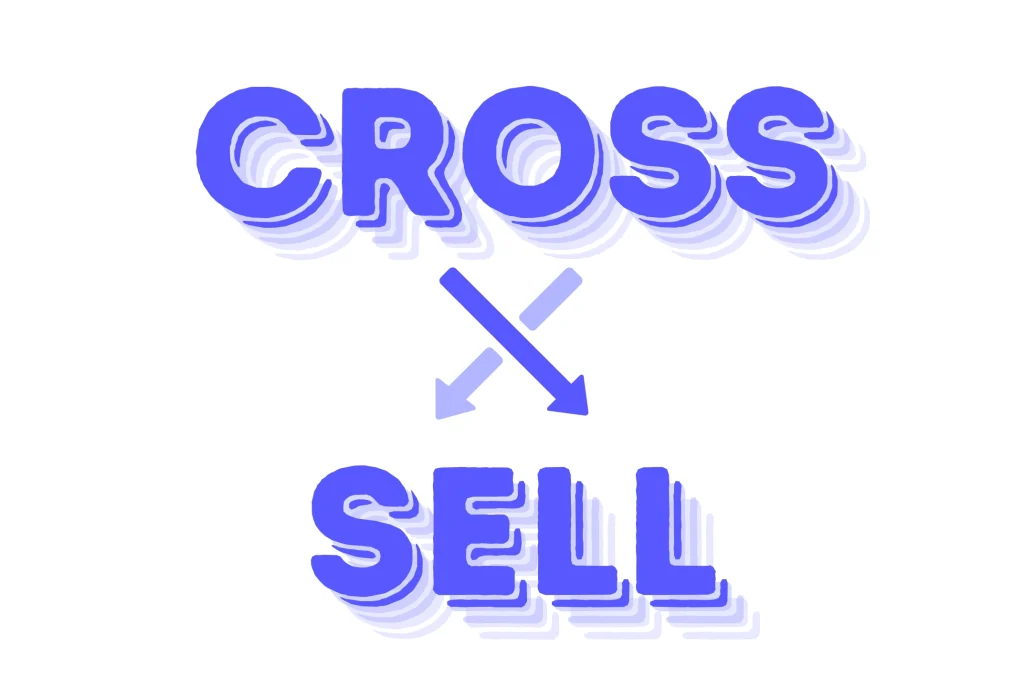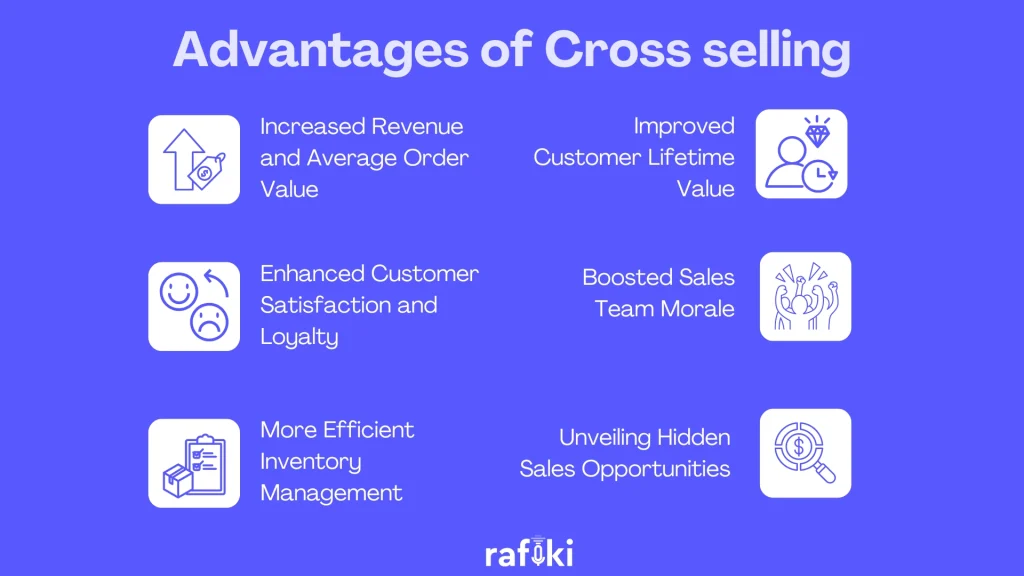Why Rafiki
Pricing


Pricing
Solutions

RevOps Leaders
Synchronize revenue generating functions

SDR Leaders
Get your team aligned and Coach your Reps 3x faster at scale

Sales Leaders
Unlock pipeline truth, drive confident forecasts

The pressure to hit sales targets is a constant reality for businesses today. Cross-selling is an effective approach to not only increase sales but also enhance customer satisfaction. While terms like upsell and cross sell might get tossed around interchangeably, they address customer needs in distinct ways.
We'll explore the intricacies of cross-selling and how it can become a powerful tool in your sales arsenal.
Cross-selling isn't about getting customers to spend more on the same thing; it's about offering them additional products that work together seamlessly to enhance their initial purchase. This can significantly increase the value proposition for your customers and boost your revenue.
Imagine a company selling email marketing software. The sales person, seeing the prospect’s needs, might also try to sell them a lead verification tool. These two softwares integrate well and the customer would be able to not only send emails, but also find more leads to reach. A situation where the whole is greater than the sum of parts, which is a win-win.
Consider a customer purchasing a new printer. An effective cross-sell strategy would involve suggesting compatible ink cartridges or a paper refill package. These additional products directly complement the printer purchase, ensuring the customer has everything they need for a smooth printing experience. Cross-selling done right provides a win-win situation: the customer gets a more complete solution, and your business benefits from increased sales.

While both cross-selling and upselling aim to increase sales, they target customers in distinct ways. Here's a breakdown to help you differentiate between the two:

So, you're convinced of the power of cross-selling and ready to take your sales game to the next level. But where do you begin? Here are 5 battle-tested techniques to equip you for cross-selling success:
The foundation of a successful cross-sell lies in truly understanding your customer's needs. Instead of launching into a product pitch, ask insightful questions to uncover their goals, challenges, and pain points. Think of yourself as a detective, piecing together clues to identify the perfect complementary product that solves a hidden problem or enhances their initial purchase.
Avoid technical jargon and focus on translating product benefits into solutions for the customer's specific situation. Imagine explaining a new printer to your grandma; ditch the acronyms and highlight the ease of use, reliable printing quality, and affordability. Tailoring your cross-sell message to resonate with the customer's needs demonstrates that you care about their experience, not just making a sale.
Nobody likes a salesperson who sounds like a used-car salesman. After you've unearthed the customer's needs through discovery and presented your cross-sell option in clear, customer-centric language, give them space to consider. Offer additional information or answer questions, but avoid being overly persuasive. A genuine recommendation positions you as a trusted advisor, not a pushy salesperson.
Customers are often drawn to the convenience and perceived value of bundled products. Create enticing packages that combine your core offering with complimentary items at a discounted price. This not only simplifies the buying process for the customer but also encourages them to explore additional products they might not have considered otherwise. Think smartphone bundles that include headphones and a case, or software subscriptions packaged with training tutorials.
Data is everywhere. So, leverage customer purchase history and buying trends to inform your cross-selling efforts. Consider a sales intelligence platform like Rafiki that analyzes past interactions and recommends hidden cross selling opportunities. This data-driven approach ensures your cross-sell suggestions are personalized and highly likely to resonate with the customer's specific needs.
Cross-selling done right is a win-win for both businesses and customers. However, it's crucial to maintain ethical practices to ensure long-term trust and customer satisfaction. Here's the key:
Cross-selling is a powerful approach for boosting revenue and customer satisfaction when implemented strategically. By understanding customer needs, recommending relevant products, and prioritizing value over pressure, you can transform cross-selling from a sales tactic to a valuable conversation.
Leverage conversation intelligence platforms like Rafiki to empower your sales team with valuable insights to personalize their cross-sell recommendations and maximize their impact. Put these strategies into action by exploring Rafiki’s free 14 day trial!
Cross Sell Effectively